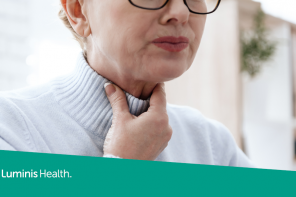When the temperature rises and the sun comes out, many people think it’s time to start soaking up the sun or hitting the tanning salons. But a “perfect summer tan” comes with a high price.
“A tan is actually an injury to the skin, it’s not a tint,” says Barry Meisenberg, MD, the Chair of the Department of Medicine and Chief Academic Officer at Anne Arundel Medical Center and Luminis Health. Although we often hear a summer tan referred to as a “healthy glow,” Dr. Meisenberg says it’s anything but healthy.
“A tan is essentially caused by a skin injury from ultra violet (UV) radiation. The resulting inflammation is what causes the skin to darken.”
Many people believe a base tan or tanning gradually will protect them from skin damage as the summer goes on. According to the Centers for Disease Control and Prevention, this isn’t true. “The idea of a safe base tan is a myth,” says Dr. Meisenberg. “In fact, people who tan in tanning booths are more likely to report being burned by the sun.”
All forms of tanning increase the risk of skin cancer and other skin damage. The most serious of these is melanoma, which kills nearly 10,000 Americans every year. According to the National Cancer Institute, melanoma is among the most common forms of cancer found in those ages 25 to 39. In addition, young adults are more likely to be diagnosed with melanoma than younger children and older adults.
Of course, not everyone who tans will develop skin cancer, and no public health authority recommends avoiding all sun exposure. But the damage caused by exposure to UV rays takes its toll over time. Tanners are more likely to develop wrinkles earlier in life than non-tanners. And the more UV radiation you’re exposed to during your lifetime, the more likely you are to develop age spots and scaly wart-like blotches called actinic keratosis. UV radiation is also very damaging to eyes, and can increase the risk of cataracts.
Unfortunately, despite all the evidence linking UV radiation to skin damage and cancer, people continue to sunbathe or use tanning salons. The cultural pressure to be tan, especially in the summer, drives many people to intentionally expose themselves to cancer-causing UV-radiation.
“So much of [indoor tanning] is about dissatisfaction with body image,” says Dr. Meisenberg, “Society is sending harmful messages that our body’s appearance is inadequate in some way. Adolescents especially should be aware that they are the target of messages that tell them to be dissatisfied with how they look.”
To reduce your risk for skin cancer and premature aging of the skin, avoid indoor tanning and protect yourself from excessive exposure to UV radiation. Apply generous amounts of sunscreen with at least SPF 30 before going outside for prolonged periods, and reapply every two hours or after swimming or sweating. Wear sun protective clothing to keep your skin covered in the sun. Wear sunglasses with both UVA and UVB protection.
 Barry Meisenberg, MD, is the Chair of the Department of Medicine and Chief Academic Officer at Anne Arundel Medical Center and Luminis Health.
Barry Meisenberg, MD, is the Chair of the Department of Medicine and Chief Academic Officer at Anne Arundel Medical Center and Luminis Health.




